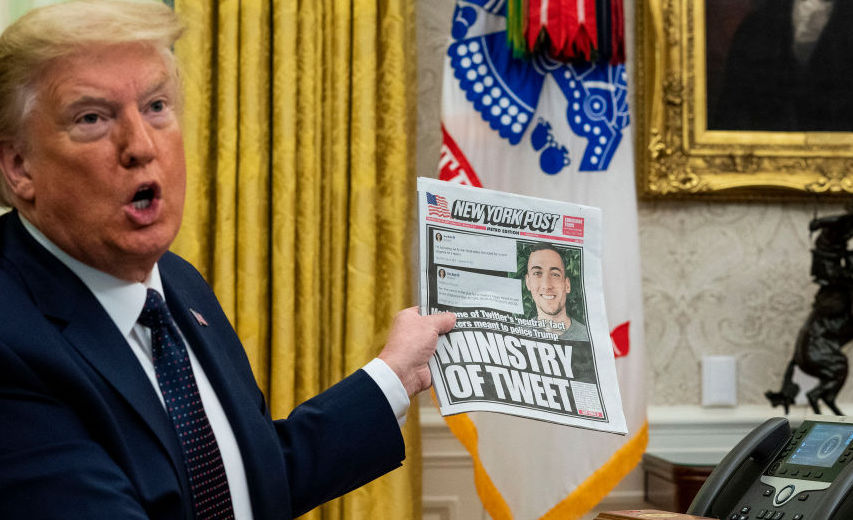Twitter has become a core component of the media infrastructure. The platform might only have around 330 million active monthly users globally (compared with Facebook’s 2.5 billion), but its influence in shaping how we see and understand news is far greater.
Its simple and streamlined design, ideal for disseminating tidbits of information in live time, has made it a prime vessel for finding and generating news. According to one survey, 83% of journalists rank Twitter as their most valuable platform and media representatives account for the highest proportion of verified ‘blue tick’ accounts. The platform not only gives journalists access to a constant stream of information, but it also allows them to keep tabs on what peers are publishing. Yet for all its advantages, Twitter’s marriage with the fourth estate is far from benign.
For one, Twitter is far from representative. While around 3 in 4 adults Twitter users in the U.S. use the network for news, the audience is small and skewed. Of its 145 million global active daily users, Twitter’s users tend to be younger, more Left-leaning and educated, and have higher incomes when compared to the average. With the median user tweeting just twice a month, 80% of all tweets are generated by just 10% of users — or around 2% of the US population — who are also typically the most active and politically vocal. This means Twitter is much less an insight into the public psyche, and more a sample of those who shout loudest.
Moreover, with over 1 in 5 journalists checking Twitter as their first source of news, there is a risk that what happens on the platform is also over-reported, and that the news cycle ends up shifting before previous stories are analysed. President Donald Trump has often wielded this to his advantage by using his Twitter account to deflect and divert media coverage. According to a recent study, journalists have tended to respond to his distractions by reducing their coverage of the initial news item that triggered it in the first place.
Drawing attention to Twitter’s shortcomings could help ameliorate some of these problems. Finland, for example, which ranks first in the Open Society Institute’s Media Literacy Index, goes beyond teaching school students to identify fake news on social media by promoting broader online critical thinking. Meanwhile, clear labelling on posts from media-related accounts to highlight the line between reporting and news opinion or satire, could be helpful. Journalists might also benefit from a social media code of practice, to ensure the integrity of their articles are not overly influenced by the platform.
Ultimately, Twitter is as much a tool to misinform and narrow our perspectives as it is a means to inform and broaden them. Users — and particularly journalists — would do well to remember that.











Join the discussion
Join like minded readers that support our journalism by becoming a paid subscriber
To join the discussion in the comments, become a paid subscriber.
Join like minded readers that support our journalism, read unlimited articles and enjoy other subscriber-only benefits.
Subscribe